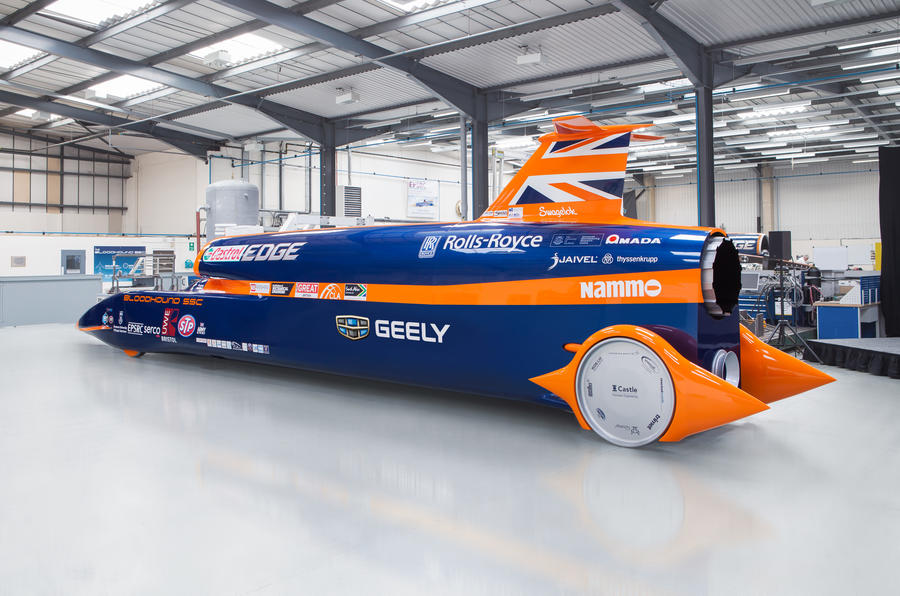The EJ200 jet engine of the Bloodhound SSC, Britain's 1000mph world land speed record challenger, will be driven to 200mph this Thursday as part of its first phase of testing.
The test will see the world's fastest man of the past 20 years, Wing Commander Andy Green, at the wheel for the first time.
Green and his team plan to run the jet and rocket-powered car at up to 200mph, using its EJ200 Eurofighter engine on the main runway at Newquay Airport, Cornwall. The runs will evaluate the car's steering, brakes, suspension and data systems, while also measuring the efficiency of the air intake that feeds the EJ200 jet engine, sourced from a Eurofighter Typhoon.
If the tests on Newquay's 1.7-mile runway are successful, Bloodhound will be shipped to its specially prepared 11-mile track at Hakskeen Pan in north-western South Africa, for the first of two high-speed campaigns. At the first, backers hope to top 800mph, beating Green's previous mark (set 20 years earlier, on 15 October 1997, in Thrust SSC) of 763.065mph.
Next year, the Bloodhound crew will add extra rocket motors and treble the power to set a 1000mph land speed record - the project's ultimate objective.

"Our first target at Newquay will be first to make sure all systems are working properly," said chief engineer Mark Chapman earlier this year, "and then to run tests to decide the speed at which we can apply full throttle. Jet engine intakes are designed to work best at speed, and there's a threshold at which they can accept full throttle. It's important to know it because it affects how much track you use up before the car can start accelerating in earnest."
Project director Richard Noble, himself a former land speed record holder, called the Newquay runway trials "the biggest milestone in the history of the project so far", because they provide the team with its first opportunity to rehearse the procedures that will be used for Bloodhound's serious record runs.

Noble said the Bloodhound team also see the runway trials as a way of thanking the schools, students, families and companies who have supported their project, which stalled for almost a year due to a shortage of finance until Chinese car maker Geely - owner of Volvo, the London Taxi Company and now Lotus and Proton - agreed to become Bloodhound's "lead partner" and to finance the 1000mph project to its conclusion.
The exact speed Bloodhound achieves at Newquay will depend on its ability to stop, says Chapman. For the first tests, the car will be equipped with carbon disc brakes and wheels with Dunlop rubber tyres from an English Electric Lightning fighter aircraft, but for the higher-speed runs - during which the wheels will turn at up to 10,200rpm, or 170 times per second - it will have solid aluminium wheels, because rubber tyres would never hold together.
At that speed, said Chapman, a 1kg bag of sugar would weigh 50 tonnes. When Bloodhound's full power - the equivalent of 180 Formula 1 cars - is deployed, the car is designed to go from 0-60mph in less than a second, reaching 1000mph in 55sec.
Spectators planning to attend Bloodhound's public days must purchase tickets, which are available at bloodhoundssc.yourticketbooking.com. Numbers are limited.
Read more:
Bloodhound SSC land speed record attempt postponed